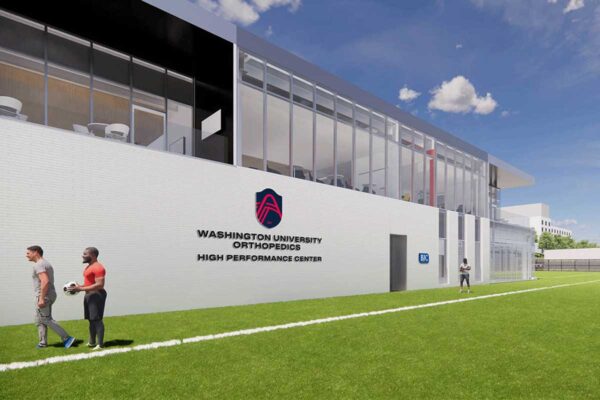When St. Louis City SC takes the field for its home opener Saturday, March 4, Major League Soccer (MLS)’s newest expansion team will celebrate many firsts that will have a game-changing effect not just on soccer, but on professional sports as a whole, said Patrick Rishe, director of the sports business program at Olin Business School at Washington University in St. Louis.
For starters, City SC is the first female majority-owned team in the MLS. Additionally, Purina — the team’s kit (aka, jersey) partner — also is female-led.
“To get a professional sports team, you need three things: You need a wealthy ownership group, local fans and corporate partnerships, and you need a brand-new venue that will impress the league. St. Louis had all three of those things, and we also had a female-led ownership group with the Taylor family — that really set our bid apart from the dozens of other cities that wanted into Major League Soccer,” Rishe said.

“The organization should be proud of this achievement, and the city should lean into it. Who knows what kind of amplified effects this could have across the league?”
City SC is also the first in the league to have its entire operation in one physical footprint. CityPark, located at Market and 22nd streets in downtown St. Louis, is home to the club’s main pitch, three practice pitches, headquarters (coming summer 2023) and merchandise store as well as the Washington University Orthopedics High Performance Center.
“No other majority soccer team in the country can say that — it’s a real point of pride for the team. Having all of the operations on one campus will lead to a lot of efficiencies. Players can get treatment if they need it next door to where they practice. And executives can stop by the training center, check stock in the merchandising center or run over to the main stadium to check on operations quickly. Having everything in one place will make it more attractive for this club to recruit employees in the future,” Rishe said.
When it comes to game days, CityPark will deliver an experience that is second to none, Rishe said. The club promises to offer the best matchday menu in sports, featuring dozens of local restaurateurs, including Steve’s Hot Dogs and Balkan Treat Box — a level of locally based food sources that is unheard of, he said.
“Couple that with the technology that they’re planning on introducing, making the customer experience faster and more seamless with a lot of grab-and-go, automated concessions so fans do not have to waste time standing in line,” he said. “I think that’s going to be something that will be copycatted across all professional sports.”
Fans can also be proud of City SC’s commitment to sustainability, which includes a pledge to make CityPark a zero-waste stadium, Rishe added.
Breaking records before first kickoff
St. Louis is known as America’s first soccer capital, so perhaps it’s no surprise that City SC is shattering league records before they even take the field for their first game.
“St. Louis soccer fans were clearly ready to welcome a professional team to town. The team received more than 60,000 deposits for season tickets in a stadium that seats just 22,500,” Rishe said.
“And the team’s inaugural kit broke league sales records over a 30-day period before the design was even revealed,” he added. “Undoubtedly, the league will be looking for ways to copycat the team’s success and boost revenues throughout the league.”
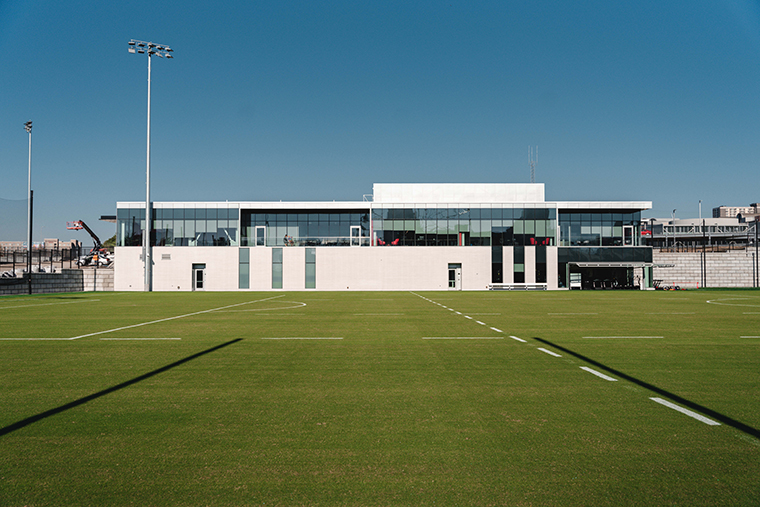
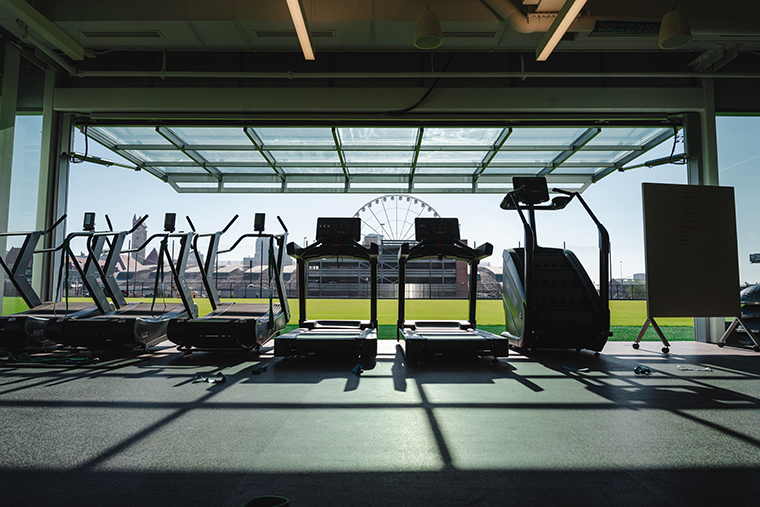
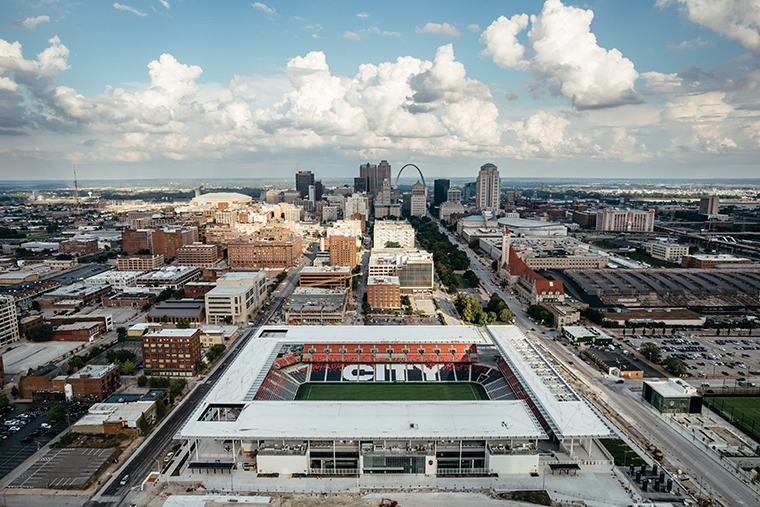
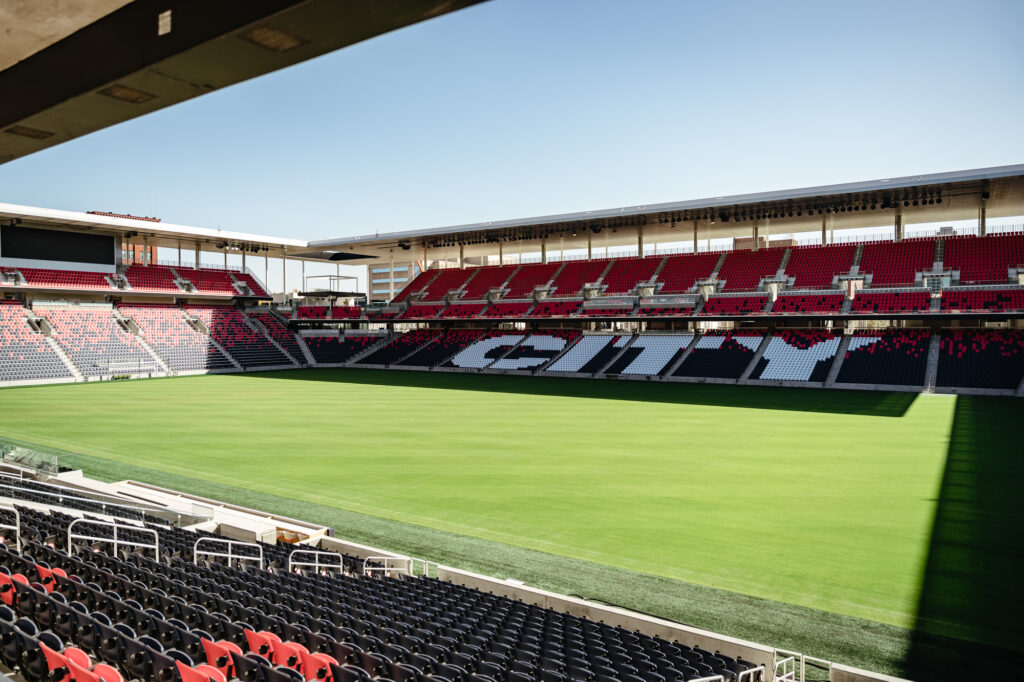
Boom for local economy, jobs
Industry-leading gameday experience, top-of-the-line technology and a commitment to sustainability are certainly points of pride for the team and fans. But you don’t have to be a soccer fan to be excited about what the new team has to offer for the community as a whole, Rishe said.
When sports economists talk about economic impact generated by a team or venue, they generally focus on dollars coming into the community from out of town, Rishe explained. Visitors for home games and special events — like the World Cup or youth sporting tournaments — bring new dollars to the community that are a huge boost to the local hospitality industry.
‘I think what the soccer team can take great pride in already is how they’ve changed the look and feel of the western side of downtown St. Louis. They have extended the liveliness and the economic viability of a section of downtown that was previously blighted.’
Patrick Rishe
“The St. Louis Cardinals are one of the teams nationwide that generates the most economic impact because a large percentage of their fan base comes from outside the St. Louis market,” Rishe said. “While it’s unlikely SC will bring in as many visitors as the Cardinals, the new MLS team is already having a positive economic impact on the region.
“I think what the soccer team can take great pride in already is how they’ve changed the look and feel of the western side of downtown St. Louis. They have extended the liveliness and the economic viability of a section of downtown that was previously blighted,” Rishe said.
“Over the past several decades, there has been a struggle to achieve consistent vibrancy downtown. But there’s a lot of momentum downtown, right now, especially with the new stadium.”
The new stadium also has created a ripple effect throughout the area. Already, Maggie O’Brien’s — a longtime restaurant and Irish pub across Market — has been renovated, and The Pitch Athletic Club and Tavern opened inside Union Station. And more developments in the neighborhood are likely, Rishe said.
“The trickle-down effect will have a very real economic impact in the region. The new stadium will attract more out-of-town visitors, as well as more St. Louis County residents, downtown for games and events. Together, this will certainly create additional infusion of tax dollars for the city of St. Louis.”
The addition of City SC and the Battlehawks XFL team downtown also creates more job opportunities in the service sector — jobs that were hard hit during the pandemic. More visitors to the region will fuel an increase in job opportunities at neighboring businesses, too, Rishe said.

